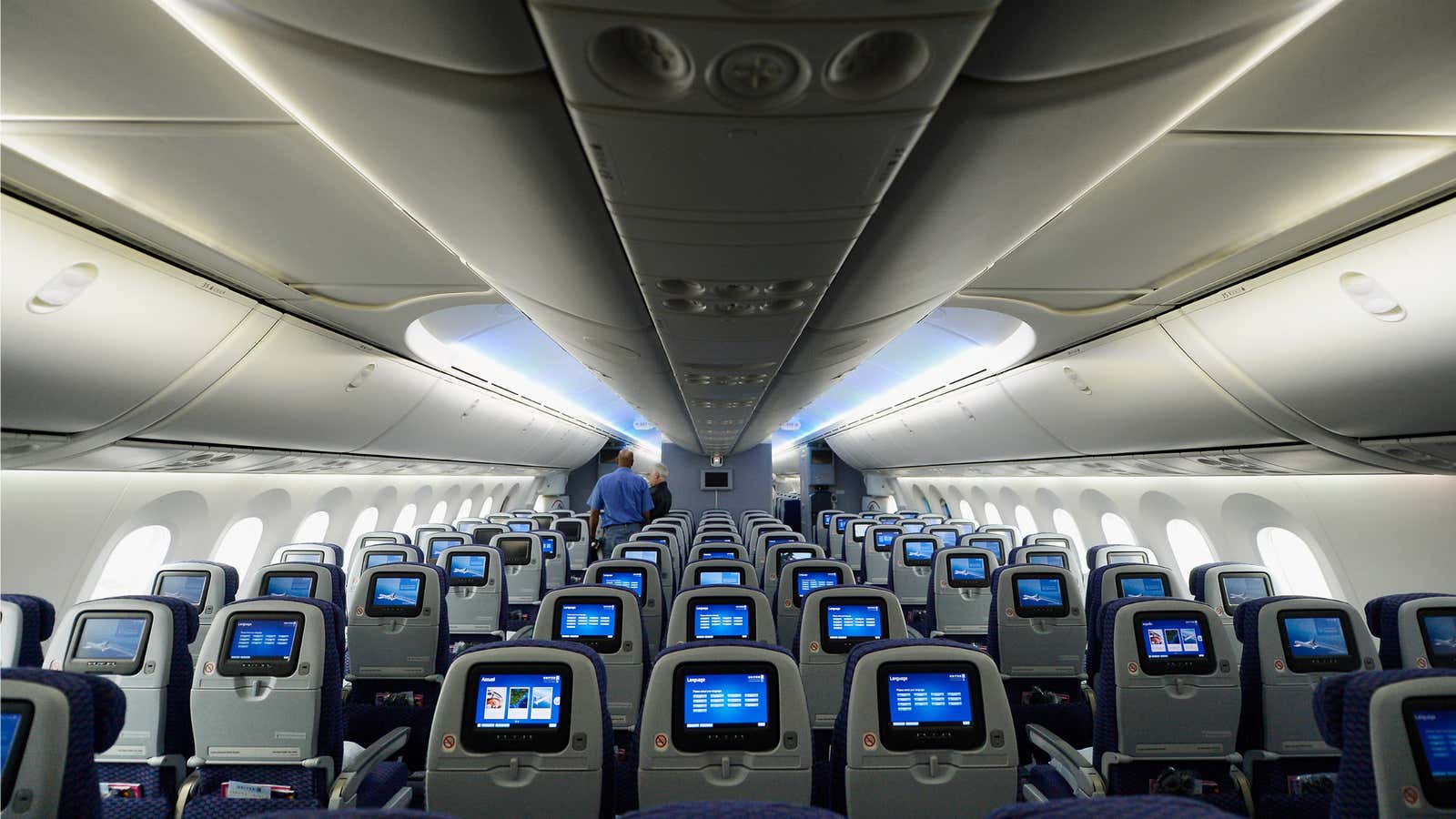Update: The Federal Aviation Administration has approved Boeing’s proposed repair for lithium-ion batteries aboard its 787 Dreamliner, thus clearing it to fly. The jets have been grounded since January after fire and smoke erupted from its lithium-ion battery packs.
But Boeing may lose one of the key original selling points of its twin-engine plane—its ability to fly between nearly any two points on the globe using less fuel than four-engine planes. The Seattle Times, the hometown newspaper to Boeing headquarters, reports that the planes may not be able to fly from Tokyo to Silicon Valley, a major route, for instance, or Tokyo to Boston. And there may be no direct flights from Auckland to Los Angeles.
Such limitations would affect All-Nippon Airways, Japan Airlines and Air New Zealand, all of whom have bought the 787s.
At question is the plane’s Extended Twin Operations certificate, known as ETOPS. Currently, only four-engine airliners can fly super-long routes up to five-and-a-half hours while more than an hour away from any airport, such as Honolulu’s. Twin-engine planes like the 787 are limited to three hours, which would preclude trans-Pacific routes. But Boeing had made part of its sales pitch that it expected to obtain clearance for the longer certification (Reuters was the first to report this possibility.). That feature—the longer flying time—made the 787 very attractive to the Asian airlines.
After publication, Boeing sent the following response to an emailed question:
In our certification plan that we put together with the FAA, it is designed to lift the airworthiness directive to fully comply, and there will be no additional limitations on the airplane following the lifting of the airworthiness directive. So we have had no conversations with regard to limiting ETOPS at all as a result of this. The fix we are proposing, for which the certification plan has been approved is considered a permanent and complete set of fixes and so we have got no limitations on the airplane that result from that.”
The 787 currently stands at 180 minute ETOPS approval and our plan to seek 330-minute approval has not changed.
In an April 16 hearing in the US Senate, Federal Aviation Administration chief Michael Huerta said the ETOPS certification is under review. The review adds a second layer of trouble for Boeing just when it seemed to be in the clear.




